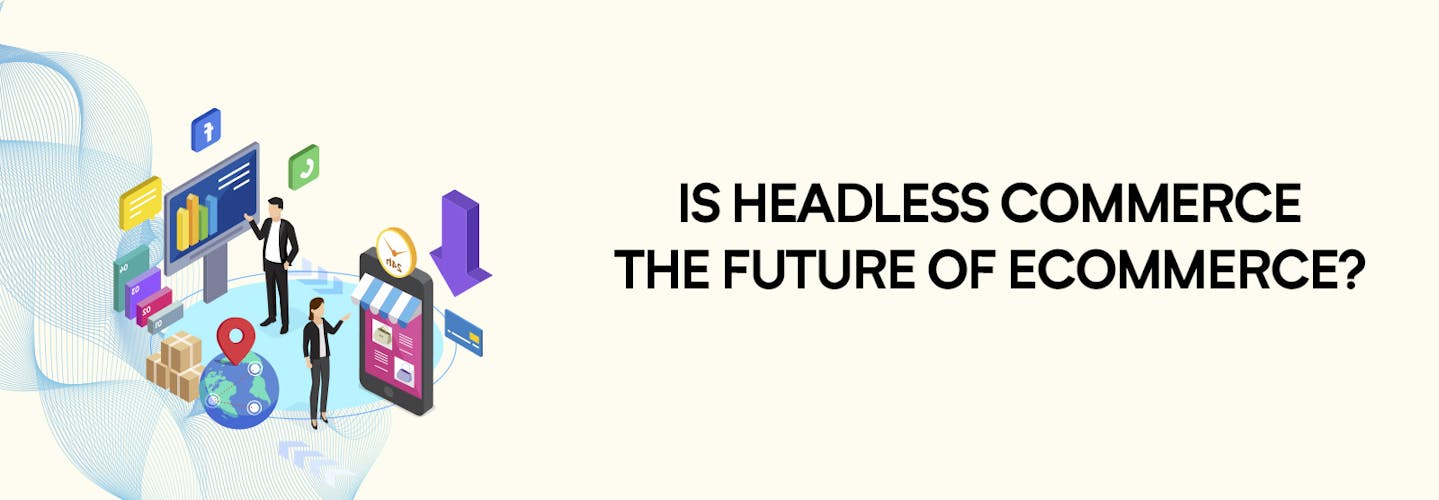
Is Headless Commerce The Future Of Ecommerce?
Yes, the future of ecommerce is headless commerce.
It’s a game-changer for brands with the financial means to invest in it.
As development and investment costs decrease, headless commerce can become the go-to strategy for all online stores, making it economically viable for various sellers to adopt this innovative approach.
One of the most significant innovations we’ve seen recently is the emergence of headless commerce.
But what is headless commerce, and why is it so important to the future of eCommerce? Let’s dive in and explore!
Understanding Headless Commerce

What is Headless Commerce?
Headless commerce is a unique approach to eCommerce that separates the front end and back end of a web store.
This decoupling allows for greater agility, flexibility, experimentation, and customization of the front-end user interface (UI) without impacting or needing changes to the back end.
Decoupling the Front End and Back End
In traditional eCommerce platforms, the front end and back end are tightly connected, making it difficult to customize the UI easily.
With headless commerce, this is no longer a problem.
The front end and back end are connected through web services or API calls, allowing for independent experimentation on both ends while still maintaining a seamless data exchange.
The Rise of Headless Commerce
1. Growing Demand for Personalized Experiences
Why is headless commerce gaining so much traction? One reason is the growing demand for personalized experiences.
Consumers today want control over when and how they purchase. They crave unique, engaging experiences that traditional platforms often struggle to provide.
Headless commerce, with its flexibility and customization options, is perfectly poised to meet these demands.
2. Accelerated Adoption by Industry Leaders
Industry leaders are also accelerating the adoption of headless commerce. Amazon, for example, uses a headless commerce solution and is able to deploy updates every 11.7 seconds.
This rapid innovation and agility are key to staying competitive in today’s fast-paced eCommerce landscape.
Key Components of Headless Commerce
1. API-Driven Architecture
One of the key components of headless commerce is its API-driven architecture.
APIs connect the front end and back end of the headless commerce system, allowing for greater flexibility and customization in designing user experiences.
2. Content Management Systems (CMS)
Content management systems (CMS) are often used to manage and deliver content in a headless commerce system.
This allows for a more streamlined and efficient content delivery process.
3. Integrating with Multiple Touchpoints
Headless commerce also integrates with multiple touchpoints, including websites, mobile apps, and smart device interfaces.
This ensures a seamless user experience across all platforms.
What Advantages Does Headless Commerce Offer?
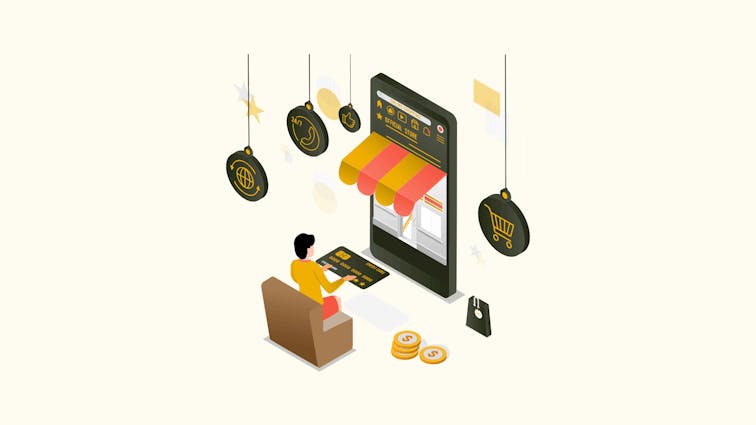
Headless Commerce, a modern approach to eCommerce, provides several beneficial features for businesses. Here are some of its essential advantages:
1. Enhanced Flexibility and Agility
One of the main benefits of headless commerce is its enhanced flexibility and agility. Businesses can quickly adapt to market changes and customer demands without impacting their eCommerce logic.
2. Seamless User Experience Across Devices
Headless commerce also provides a seamless user experience across devices.
Whether customers are shopping on a desktop, mobile app, or smart device, they’ll enjoy a consistent and engaging shopping experience.
3. Improved Performance and Scalability
Finally, headless commerce offers improved performance and scalability.
With microservices scaling independently to meet demand, businesses can ensure their eCommerce platform is always performing at its best.
Challenges of Implementing Headless Commerce
Explore the challenges associated with implementing headless commerce.
1. Complexity of Integration
While headless commerce offers many benefits, it’s not without its challenges.
One of these is the complexity of integration.
Businesses need to ensure their front end and back end systems are seamlessly integrated to provide a smooth user experience.
2. Resource Requirements and Costs
Implementing a headless commerce solution can also be resource-intensive and costly.
Businesses need to consider their budget and resources before deciding to adopt this approach.
3. Potential Technical Hurdles
Finally, there may be potential technical hurdles when implementing a headless commerce solution.
Businesses need to ensure they have the technical expertise and support to overcome these challenges.
The Future of eCommerce: Headless Commerce
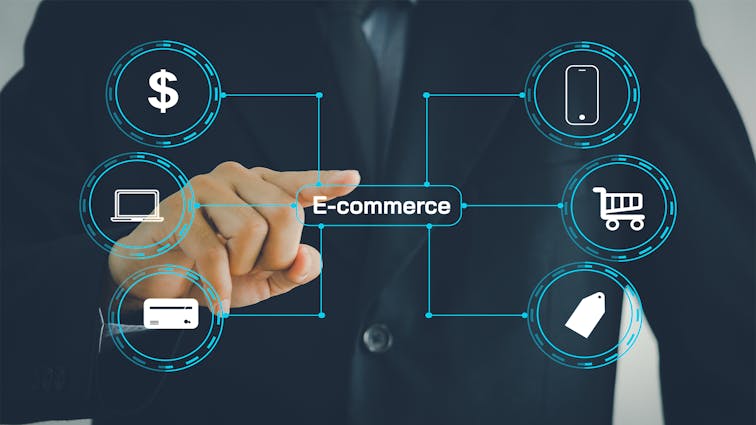
Integrating and adopting a headless commerce strategy has the potential to revolutionize the way businesses approach eCommerce.
As customer expectations continue to grow, companies must stay ahead of the game and embrace new innovative solutions to deliver top-notch shopping experiences.
Here’s how headless commerce fits into the future of eCommerce:
1. Unleashing Innovation and Creativity
Looking ahead, headless commerce is set to unleash a wave of innovation and creativity in the eCommerce space.
With its flexibility and customization options, businesses can experiment with new features and functionalities to provide unique shopping experiences.
2. Empowering Omnichannel Experiences
Headless commerce is also empowering omnichannel experiences.
By integrating with multiple touchpoints, businesses can provide a seamless shopping experience across all platforms, keeping pace with evolving customer expectations.
3. Keeping Pace with Evolving Customer Expectations
As customer expectations continue to evolve, headless commerce will play a crucial role in helping businesses keep pace.
By offering a flexible and customizable platform, businesses can quickly adapt to changing customer demands and stay ahead of the competition.
Headless Commerce and Progressive Web Apps (PWAs)
Integrating headless commerce with progressive web apps (PWAs) can offer even more benefits for eCommerce businesses:
1. Introduction to Progressive Web Apps
Progressive Web Apps (PWAs) are a new breed of web applications that combine the best of web and mobile apps.
They’re fast, reliable, and engaging, providing a user experience that’s on par with native apps.
2. Synergies between PWAs and Headless Commerce
But what’s the connection between PWAs and headless commerce? Well, it’s all about flexibility and customization.
Just as headless commerce decouples the front end from the back end, PWAs allow developers to build app-like experiences on the web.
This synergy enables businesses to deliver a seamless, app-like shopping experience on the web, transforming the mobile shopping experience.
Headless Commerce and Voice Commerce
Integrating headless commerce with voice commerce can unlock even more potential for engaging and interactive customer experiences:
1. The Rise of Voice Commerce
Voice commerce is an emerging trend that allows customers to use voice commands via digital assistants like Amazon’s Alexa, Google Assistant, or Apple’s Siri to place orders, make purchases, and receive shopping assistance.
2. Integrating Voice Commerce in Headless Systems
Headless commerce offers the flexibility required to integrate with new technologies like voice commerce. By connecting to various APIs, businesses can optimize their eCommerce platform for voice-activated transactions and customer interactions.
3. Enhanced Shopping Experiences with Voice
As voice commerce becomes more commonplace, headless commerce platforms can adapt to meet new customer expectations. By offering engaging and seamless voice-activated shopping experiences, businesses can not only stay ahead of the competition, but also enhance overall customer satisfaction and brand loyalty.
Headless Commerce and Augmented Reality (AR)
Discover the future of shopping with Headless Commerce and Augmented Reality (AR), revolutionizing the way customers interact with products and transforming the retail experience like never before.
1. Harnessing the Power of AR in eCommerce
Augmented Reality (AR) is another technology that’s transforming eCommerce.
By overlaying digital information onto the physical world, AR allows customers to visualize products in their own environment before making a purchase.
2. Integrating AR with Headless Commerce Platforms
Headless commerce is key to integrating AR into eCommerce platforms.
With its flexible architecture, businesses can easily add AR functionality to their platforms, revolutionizing product visualization and customer engagement.
Headless Commerce and Internet of Things (IoT)
Discover the synergy between Headless Commerce and Internet of Things (IoT), as they revolutionize the buying experience and redefine connectivity in the digital landscape.
1. Exploring the Potential of IoT in eCommerce
The Internet of Things (IoT) is all about connecting devices to the internet, from smart home devices to wearables.
This connectivity opens up a world of possibilities for eCommerce, from personalized recommendations based on smart home data to shopping on smart watches.
2. Leveraging Headless Commerce for IoT Integration
Headless commerce is essential for integrating IoT into eCommerce.
With its API-driven architecture, businesses can connect their eCommerce platforms to a wide range of IoT devices, creating a seamless shopping experience across all touchpoints.
Headless Commerce and Artificial Intelligence (AI)
Discover the seamless integration of Headless Commerce and Artificial Intelligence (AI) to revolutionize your e-commerce business and enhance your customers’ shopping experience.
1. AI-Driven Personalization in eCommerce
Artificial Intelligence (AI) is revolutionizing eCommerce, enabling businesses to offer personalized shopping experiences like never before.
From product recommendations to chatbot assistants, AI is making online shopping more personal and engaging.
2. Utilizing Headless Commerce to Leverage AI Capabilities
Headless commerce is key to leveraging AI in eCommerce.
With its flexible architecture, businesses can integrate AI technologies into their platforms, using predictive analytics and chatbot assistants to enhance the shopping experience.
Headless Commerce and Blockchain Technology
Discover the power of Headless Commerce and Blockchain Technology, revolutionizing the e-commerce industry with unmatched flexibility, security, and innovation.
1. Introduction to Blockchain in eCommerce
Blockchain technology is making waves in eCommerce, enhancing security and transparency.
By creating a decentralized ledger of transactions, blockchain can streamline supply chain management and payments.
2. Enhancing Security and Transparency through Headless Architecture
Headless commerce plays a crucial role in integrating blockchain into eCommerce.
With its flexible architecture, businesses can add blockchain functionality to their platforms, enhancing security and transparency.
Embracing Headless Commerce: Successful Case Studies
Case Study 1: Retail Industry - Amazon
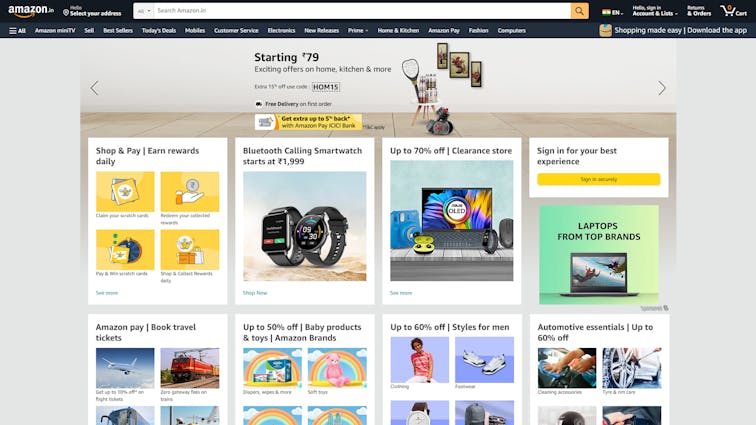
Amazon, a global leader in the retail industry, is a prime example of successful headless commerce implementation.
By decoupling the front end from the back end, Amazon has achieved unprecedented agility and flexibility.
This allows Amazon to deploy updates every 11.7 seconds, keeping their platform innovative and customer-centric.
The result? A seamless, personalized shopping experience that keeps customers coming back.
Case Study 2: Fashion and Apparel - ASOS

In the fashion and apparel industry, ASOS stands out for its innovative use of headless commerce.
ASOS has integrated Augmented Reality (AR) into their eCommerce platform, allowing customers to visualize products in their own environment before making a purchase.
This has revolutionized customer engagement and product visualization, leading to increased customer satisfaction and sales.
Case Study 3: B2B eCommerce - Grainger
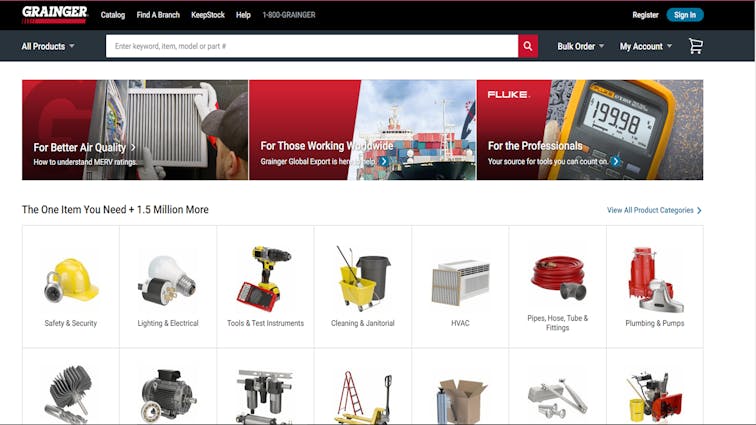
Grainger, a leading B2B eCommerce company, has leveraged headless commerce to meet the unique needs of their customers.
By integrating Artificial Intelligence (AI) into their platform, Grainger offers personalized product recommendations and chatbot assistants, enhancing the shopping experience.
This has not only improved customer engagement but also increased operational efficiency.
Headless Commerce: Is It Right for Your Business?
1. Evaluating Your Business Needs
Before jumping on the headless commerce bandwagon, it’s crucial to evaluate your business needs. Does your business require a high level of customization?
Do you plan to integrate emerging technologies like AR, AI, or IoT into your eCommerce platform? If so, headless commerce might be the right fit for you.
2. Considerations for Implementation
Implementing headless commerce is not without its challenges. It requires a certain level of technical expertise and resources.
You’ll need to consider the complexity of integration, potential technical hurdles, and the costs involved. It’s also important to have a clear understanding of how headless commerce aligns with your business strategy and goals.
3. Key Questions to Ask
Before deciding to go headless, here are some key questions to ask:
- What level of customization does my business require?
- Do I have the technical expertise and resources to implement and manage a headless commerce solution?
- How will headless commerce align with my business strategy and goals?
- What are the potential benefits and challenges for my business?
The Road Ahead: Trends and Predictions
1. Hyper-Personalization and Contextual Commerce
As we look to the future, we can expect to see a rise in hyper-personalization and contextual commerce.
Businesses will leverage AI and machine learning to deliver highly personalized shopping experiences, tailoring content and recommendations based on individual customer behaviors and preferences.
2. Integration of Emerging Technologies
Emerging technologies like AR, IoT, and blockchain will become increasingly integrated into eCommerce platforms.
These technologies will enhance the shopping experience, from visualizing products in AR to making secure, transparent transactions with blockchain.
3. The Role of Headless Commerce in Shaping the Future
Headless commerce will play a crucial role in shaping the future of eCommerce.
By offering a flexible and customizable platform, businesses can quickly adapt to changing market trends and customer demands, staying ahead of the competition.
Summary: Embrace the Future of eCommerce
Recap of the Potential of Headless Commerce
Headless commerce holds immense potential for businesses.
It offers enhanced flexibility, seamless user experiences across devices, improved performance, and the ability to integrate with emerging technologies.
It’s more than just a buzzword; it’s a game-changer in the eCommerce landscape.
Key Takeaways for Businesses
For businesses, the key takeaway is to embrace the future of eCommerce.
Evaluate your business needs, consider the potential benefits and challenges, and decide if headless commerce is the right fit for you.
Remember, the future of eCommerce is here, and it’s headless!
Discover the Power of Headless E-Commerce with Aasaan:

Are you looking to revolutionize your online store? Look no further than Aasaan, the cutting-edge headless store builder and API-first commerce platform.
With Aasaan, you can visually create exceptional shopping experiences without any coding expertise.
Immerse yourself in a world of advantages when you choose Aasaan as your e-commerce partner:
Unleash Lightning-Fast Site Speed: Experience an astounding 70% increase in site speed, ensuring your customers enjoy a seamless shopping journey like never before.
Skyrocket Your Conversion Rates: Witness a remarkable 38% uplift in conversion rates, unlocking the full potential of your sales and maximizing your revenue.
Elevate Your Average Order Value: Enjoy an impressive surge of 20% in average order value, driving higher revenue per transaction and boosting your bottom line.
Supercharge Your Time to Market: With Aasaan by your side, achieve a staggering 10x faster time to market, enabling you to outpace and outperform your competitors.
Seamless Integration and Flexibility: Aasaan effortlessly integrates with your existing backend infrastructure, or you can dive straight into our API-first commerce platform, harnessing the power of best-in-class technology within seconds.
Effortless Business Management: Streamline your operations and stay on top of your business with the convenience of a single admin app. From inventory management to order fulfillment, Aasaan empowers you to take control.
Ready for the E-Commerce Transformation? Get Started with Aasaan Today!
Take the leap and transform your e-commerce business into a force to be reckoned with. Visit: aasaan.app now to embark on your journey of success with Aasaan.
For more insight into how aasaan can fit into your workflows, go ahead and schedule a demo!
FAQ’s:
1. What is the main difference between headless commerce and traditional eCommerce?
The main difference lies in the architecture. In traditional eCommerce, the front end and back end are tightly connected. In contrast, headless commerce decouples them, allowing for greater flexibility and customization.
2. Is headless commerce suitable for small businesses?
Yes, headless commerce can be suitable for small businesses, especially those seeking to provide unique, personalized customer experiences. However, it requires technical expertise for implementation and management.
3. How does headless commerce impact SEO?
Headless commerce can positively impact SEO. With faster loading times and improved performance, it can enhance user experience, a key factor in SEO. However, SEO strategies need to be properly implemented in the decoupled front end.
4. Can headless commerce be implemented incrementally?
Yes, headless commerce can be implemented incrementally. Businesses can start by decoupling certain elements of their eCommerce platform and gradually move towards a fully headless architecture.
5. What are the security implications of headless commerce?
Headless commerce can offer improved security due to its decoupled architecture. However, businesses must ensure proper security measures are implemented and regularly updated in both the front end and back end systems as vulnerabilities may still arise.








